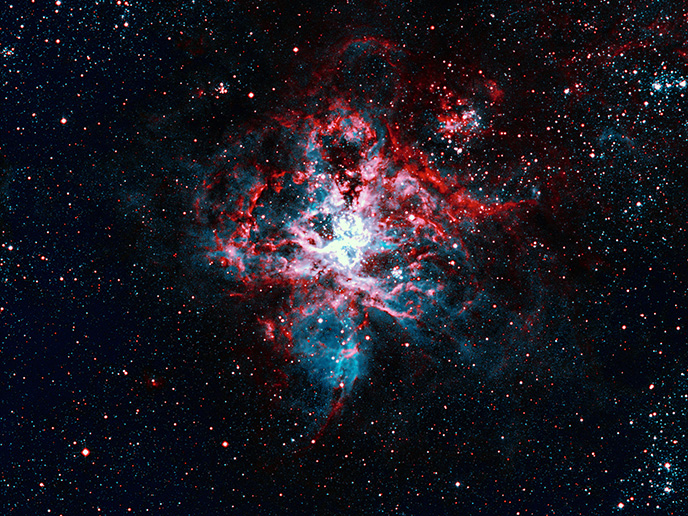Discovering the black hole needle in the galactic haystack
An international research team has discovered a dormant stellar-mass black hole in a neighbouring galaxy called the Large Magellanic Cloud. This is the first time that this type of black hole, formed by the gravitational collapse of a star, has been identified outside our galaxy. The research was conducted with support from the EU-funded projects MULTIPLES, PROGENITOR and TEL-STARS. It is described in the study(opens in new window) published in the journal ‘Nature Astronomy’. “We identified a ‘needle in a haystack’,” observes the study’s first author Dr Tomer Shenar in a news item(opens in new window) posted on ‘SciTechDaily’. The astrophysicist began the research at MULTIPLES project host KU Leuven in Belgium and is now a Marie Skłodowska-Curie Fellow at PROGENITOR project coordinator University of Amsterdam in the Netherlands. Recently, scientists have found that massive stars rarely exist alone but rather occur in pairs, as part of a binary system. However, when such high-mass stars collapse under their own gravity at the end of their lifetime, they result in stellar-mass black holes. In a binary system, this leaves behind a black hole in orbit with a luminous companion star. Since dormant black holes do not emit high levels of X-ray radiation, they are extremely difficult to detect. “It is incredible that we hardly know of any dormant black holes, given how common astronomers believe them to be,” comments co-author Dr Pablo Marchant from KU Leuven in the news item. Now, after 6 years of observations with the European Southern Observatory’s Very Large Telescope, the team has succeeded in identifying a binary system in our neighbouring galaxy. Called VFTS 243, the binary system consists of a dormant black hole with a mass at least nine times that of our Sun, orbiting a bright blue star with a mass 25 times that of the Sun.
A vanished star
The astrophysicists also discovered that the star from which the black hole emerged collapsed completely with no trace of a massive explosion. “Evidence for this ‘direct-collapse’ scenario has been emerging recently, but our study arguably provides one of the most direct indications,” states Dr Shenar. “This has enormous implications for the origin of black-hole mergers in the cosmos.” The researchers studied close to 1 000 massive stars in the Tarantula Nebula region of the Large Magellanic Cloud to find VFTS 243. “As a researcher who has debunked potential black holes in recent years, I was extremely skeptical regarding this discovery,” notes Dr Shenar. And he was not the only one. Co-author Dr Kareem El-Badry of the Center for Astrophysics | Harvard & Smithsonian in the United States shared this scepticism. “When Tomer asked me to double check his findings, I had my doubts. But I could not find a plausible explanation for the data that did not involve a black hole,” explains Dr El-Badry. The team hopes that the work supported by MULTIPLES (The MULTIPLicity of supErnova progenitorS), PROGENITOR (PRObes of Gravitational-wave progENITORs) and TEL-STARS (Turbulent and Explosive Lives of Massive Stars) will pave the way for the discovery of other such binary systems in the Milky Way and the Magellanic Clouds. “Of course I expect others in the field to pore over our analysis carefully, and to try to cook up alternative models,” concludes Dr El-Badry. “It’s a very exciting project to be involved in.” For more information, please see: MULTIPLES project web page(opens in new window) PROGENITOR project(opens in new window) TEL-STARS project(opens in new window)



